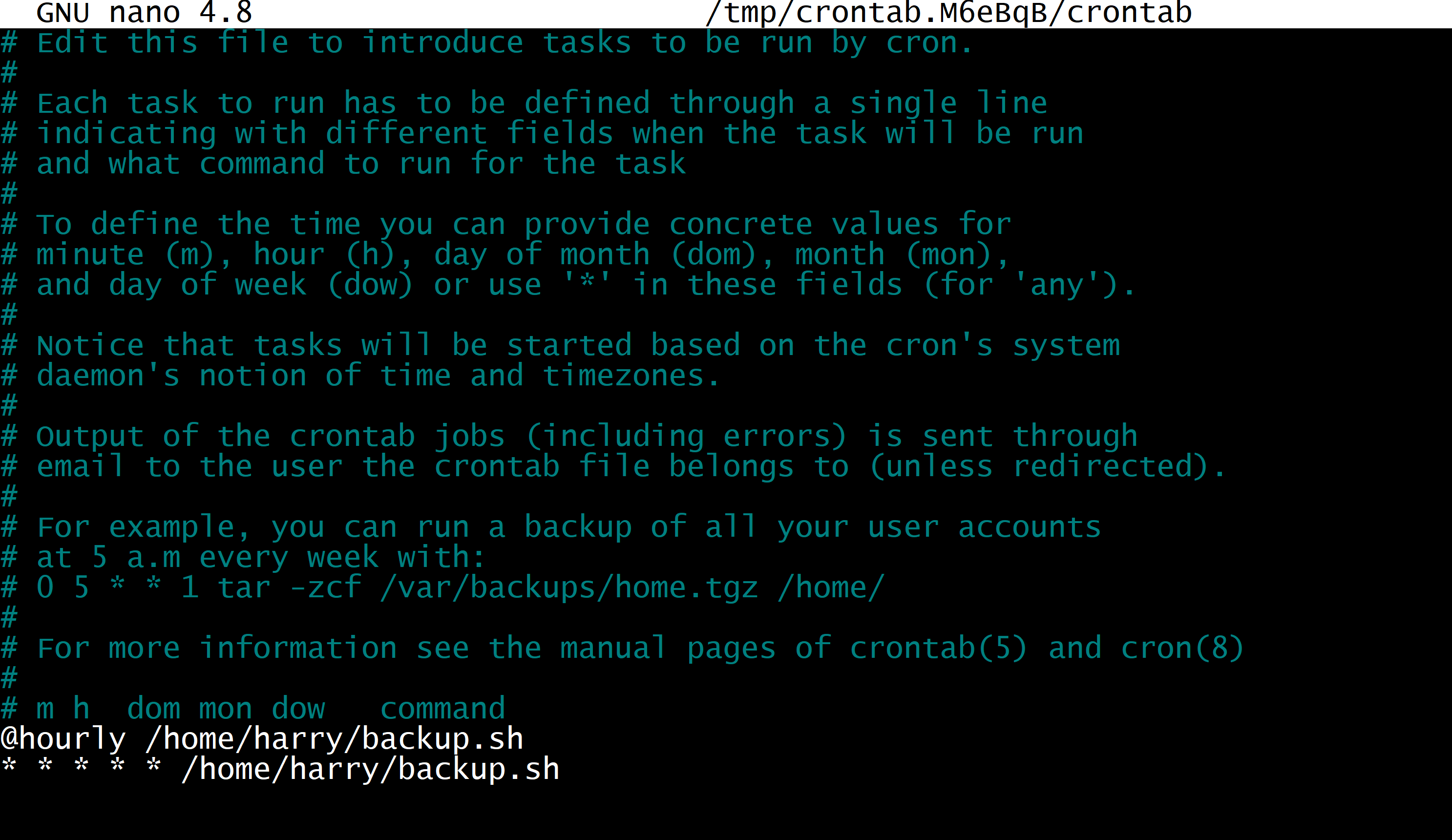In this post, I will talk about the only crontab commands you will ever need if you are managing a web server. Crontab stands for cron table which is a list of commands that would automatically run at a scheduled interval of time.
For instance, I run a bash file that prerenders all the routes from the CodeWithHarry blog. This saves me the time for manually doing the same when new blogs are added. You might want to update your sitemap, update your blog index, or take backups every 24 hours, every week, or every month.
List all the cronjobs scheduled by the current user
crontab -l
Add a new cron job
crontab -e
The following window will then open once you choose your editor by pressing 1 followed by enter:

Following are some of the ways you can add cronjobs to a Linux machine using the following command:
MIN HOUR DOM MON DOW CMD| Field | Description | Allowed Value |
|---|---|---|
| MIN | Minute field | 0 to 59 |
| HOUR | Hour field | 0 to 23 |
| DOM | Day of Month | 1-31 |
| MON | Month field | 1-12 |
| DOW | Day Of Week | 0-6 |
| CMD | Command | Any command to be executed. |
Following will run the command /home/harry/backup.sh on 11:34 AM 17th May of every year:
34 11 17 05 * bash /home/harry/backup.shSome other cron special Keywords
Following keywords make the job of a programmer easy by providing keywords for quick job runs:
| Keyword | Equivalent |
|---|---|
| @yearly | 0 0 1 1 * |
| @daily | 0 0 * * * |
| @hourly | 0 * * * * |
| @reboot | Run at startup. |
-
The following command will execute the
backup.shfile daily:@daily bash /home/harry/backup.sh -
The following command will execute the
backup.shfile monthly:@monthly bash /home/harry/backup.sh -
The following command will execute the
backup.shfile yearly:@yearly bash /home/harry/backup.sh
For anything more than this, you can always refer to the Linux Manpage for Cron.
Hope this article helps. Happy Coding!
